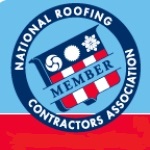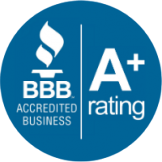Long Island Roofing: Article About Roof Ventilation
This term refers to a type of vent which is located at the peak of a sloping roof. Ridge vents are typically found on residential buildings with shingled roofs, and used to allow heated, moist air to escape the home's attic.
Long Island roofing contractors answer a question: Are there any visible signs of poor roof ventilation?Your roof and attic can reveal a few clues. Ice dams on the roof are one sign that there might be a ventilation issue. Frost on the underside of the roof is another indicator. In your attic, rusted nails, matted insulation and water stains on the wood are all signs of moisture problems that can probably be attributed to poor ventilation.

If you want to keep your roof and home in top condition, be sure that your roof is well-ventilated. Roof ventilation is required by most local building codes, but the vents aren't always installed properly. Insufficient roof ventilation can lead to a number of problems that require costly repairs. If you have any concerns about your roof's ventilation, ask your Long Island roofing company to evaluate the roof and assess whether any additional ventilation is necessary.
The most common problems caused by inadequate ventilation are moisture-related ones. Moisture can build up in your attic and create the ideal environment for mold and mildew growth. If you store possessions in your attic, the dampness combined with the mold and mildew can damage them. Even worse, mildew and mold circulating through the air in your house can cause respiratory problems for people who live there.
When moisture accumulates in the attic over a long period of time, it can eventually damage your wood and shingles. This can allow even more moisture to infiltrate when it snows or rains, and will ultimately compromise the structural integrity of the house. If the dampness gets into the insulation, the material may need to be replaced. All of these moisture-related problems require expensive repairs, so it's best to ventilate your roof properly and prevent these issues from happening in the first place.
Even your energy bills will be higher if your roof isn't properly ventilated.
A roofing professional from Long Island Roofing can answer any question you have about flat roofs or GAF roofing materials.
Since hot air rises, heated air will become trapped in the attic if the right ventilation isn't in place. Having hot air sitting directly above your living space will make your air conditioning system work harder to keep your home cool. A well-ventilated roof and attic can allow that heated air to escape and reduce the strain on your air conditioner.
A balanced mix of high and low vents will result in the best ventilation for your roof. High vents, such as ridge vents and box vents, will function like exhaust vents; the lower vents, which are usually soffit vents, function like intake vents. Although there are multiple options for high vents, only one type should be installed on your roof. Having different types of vents installed at the same time is less effective and can actually cause problems.
Adding ventilation to your roof is a complex job that's best left in the hands of professionals. However, if you have prior experience doing home improvement projects, you may be able to tackle some of the tasks yourself. Be sure to use the right safety equipment and follow all necessary safety procedures while working on the roof. If you're planning to install new shingles or add insulation to your attic, it's a great opportunity to bring your ventilation up to code at the same time.









